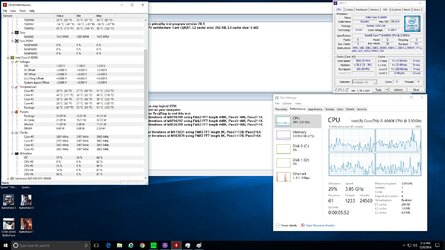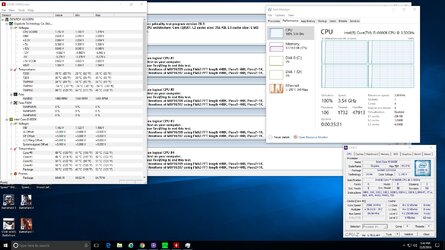How do you check VID ? I haven't seen any skylake with VID above 1.2V. Most have ~1.15V. Many motherboards are setting wrong voltage when you leave them at auto. Early ASUS BIOS was causing it to run at 1.3V+ and users were thinking they got the worst possible chips. The same CPU on 3 different motherboards had between 1.15 and 1.35 auto voltage.
Btw my luck is that i3 was overclocking better than i5 and i5 was overclocking better than i7. I had couple of i3, i5 an i7 Skylakes and the best for overclocking was i3 6320. Maybe it's my luck but I can't really see differences in silicon quality. It's all matter of batch/factory and simply luck. CPUs from the same factory and the same batch usually show similar OC potential but it's not a rule.
I don't think that Intel lower prices on their CPUs anytime soon as most users won't be convinced to AMD no matter what will be released. Enthusiasts will try new AMD chips but most users don't care about AMD anymore and it will take a lot of time to rebuild trust to this brand. I will only tell you that I work for a company which has about 1000 active clients right now and I sold 1 AMD based PC in last 5 years. Those who buy AMD right now are enthusiasts or those who want cheap PC and have no idea what are they buying. I'm not saying that AMD is pure evil but again it will take a lot of time till AMD back on track. So far we see they are reducing loses on the market and ZEN can bring them some profits.
The way I check skylake VID is use Pime95 with one thread so skylake VID = MAX turbo or Clock i5 6600k CPU to 3.9GHz, then for i7 6700k you would have to MAX turbo to 4.2GHz or clock to 4.2GHz load with Prime95. Auto does not set VID different, the CPU load, clock speed, temp makes VID vary since sandy bridge.
Serial Voltage Identification "SVID": A few generations back, Intel introduced serial voltage identification (SVID) which is a protocol the CPU uses to communicate with the voltage regulator. The power control unit inside the CPU uses SVID to communicate with the PWM controller that controls the voltage regulator. This allows the CPU to pick its optimum voltage depending on current conditions (temperature, frequency, load, etc.). You can actually use a combination of SVID and LLC to get an optimal VCore instead of manually setting it. If you start your system without making any changes, your VID (which some refer to as the stock voltage) might be 1.25v, but if you lower your CPU multiplier and restart, you will find your VID has dropped automatically. The reverse happens if you increase your clock and do not set any VCore. Intel's latest CPUs are able to pick their own voltage, and this comes into play if you want to utilize "offset" / "adaptive" voltage. The good news is that if you come from Haswell, you should look forward to a CPU that has the same or better durability.
Read more: http://www.tweaktown.com/guides/748...-intel-skylake-overclocking-guide/index5.html
The CPU also does this on its own through SVID with the different VID for each frequency. Motherboard manufacturers can override this with their own core voltage for a set multiplier, but this is not as common as it once was.
Read more: http://www.tweaktown.com/guides/748...-intel-skylake-overclocking-guide/index5.html

